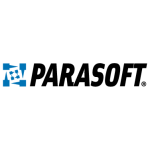I use VSI, VSM, and SOA testing. I hardly use performance testing and automated GUI testing.
The tool is currently mostly focused on SOA-related and performance testing. Its GUI automation testing is not that powerful compared to other tools, such as HPE UFT, and Selenium, in terms of, particularly, object recognition, smart identification, results repository, frameworks driven, integration with test management repositories, and ETL testing.
Today, customers look for one consolidated vendor to manage licenses and best usage under TEM (Test Environment Management) services.
The following areas of the product have room for improvement: automated GUI testing, performance testing of various HTML5 applications and its recording capabilities. There are SAP, Siebel, Oracle Apps, Citrix, Remote Desktop and RTE applications that require a multi-faceted approach for sniffing the requests and preparing the scripts.
Additionally, it does not have a robust test management repository. This impacts connecting the various phases of testing life cycle.
We have stability issues when creating stubs for performance testing. It provides the internal native web server where the VSIs are hosted/deployed, which are not scalable at higher load. They should more flexible and able to use multiple application servers. Sometimes, the VSIs stop responding too.
There is a scalability issue regarding licenses. The Developer Edition should be free and only charge for the hosting licenses. There are charges even for transactions and hits also, which makes it difficult to track usage and optimization.
While basic questions are answered, it becomes difficult with tricky questions such as, is the request payload non-plain text or Java de-serialized objects, and about customizing them. When we approach support, they redirect us to professional services. We need more helpful support here.
We used SOAPUI Pro for when web services and JMS queues had to be mocked. We shifted to CA for other protocols. But customers are looking at the return on the investment they made. Convincing them becomes a challenge.
Licensing definitely needs more flexible models. Too many complicated parameters also makes it difficult for us to explain them to our customers. Pricing definitely is too high. Not sure if CA is aware of SOAPUI Mock Services – a free alternative. And, for Pro, it is only $120 per year. If a customer has only a Web Services context, CA should explain how to bring up that story.
We have evaluated several products more than once, starting with SOAPUI Pro, IBM RTVS (earlier Green Hat), and Parasoft Virtualize.







